Living away from family changes you. Time starts to feel like something you’re always chasing, especially during festivals. And if you’re a Bengali, Durga Puja season has a way of intensifying that longing — the nostalgia, the warmth, the togetherness.
This time, instead of letting the feeling pass, I decided to act on it. My family has always been drawn to the mountains, so I planned a trip to Kinnaur, tucked deep in Himachal’s raw and rugged heart. I did not know then just how special, healing, and unforgettable this journey would turn out to be.
Day 1 — Shimla: A Gentle Beginning
Our first stop was Shimla, where the town’s colonial charm still lingers in its rooftops, cafés and pine-scented air.
We visited the Jakhu Temple, home to the towering statue of Lord Hanuman watching over the town. The views from up there — hills rolling like frozen waves — were the perfect welcome back into the Himalayas. Dedicated to Lord Hanuman, the temple is wrapped in one of the most interesting legends from the Ramayana: it is believed that Hanuman stopped right here while searching for the Sanjeevani herb to save Lakshmana. The ground where he rested became Jakhu Hill, and the temple grew from that story, carried forward by generations of belief.
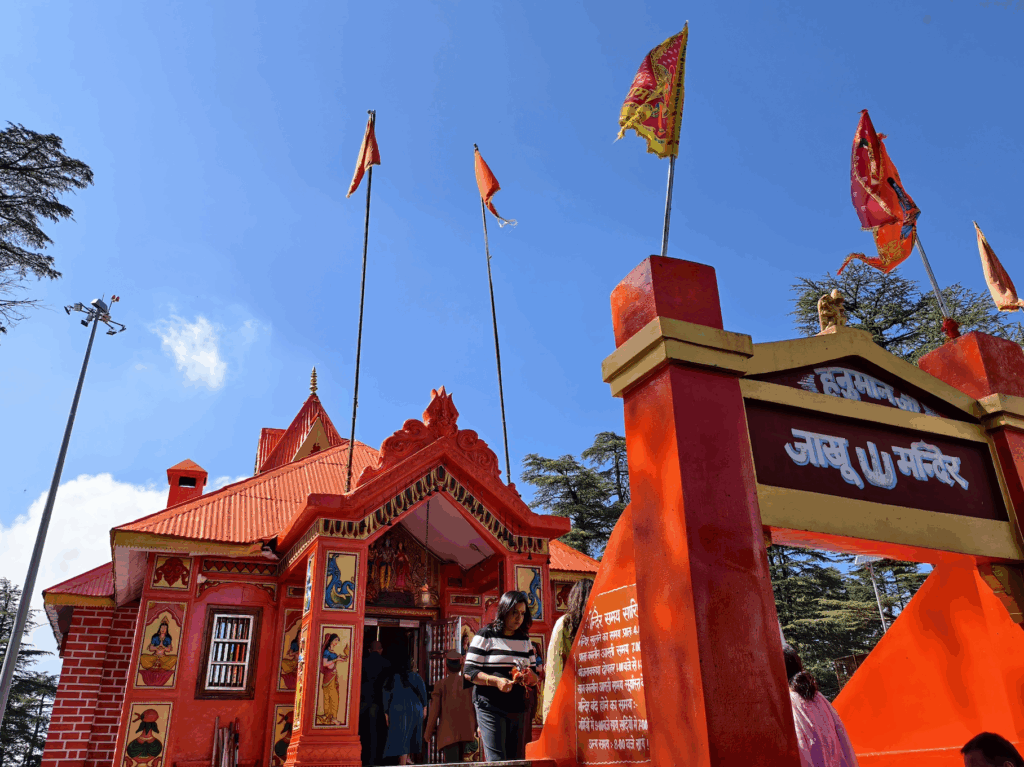

We loved our stay at the Woodville Palace, a heritage property built in the late 19th century. This places traces its origins back to 1865, when Sir William Mansfield, the Commander-in-Chief of the Imperial Army, became the estate’s first resident. This majestic property soon became the official summer residence for the successive Commander-in-Chiefs of India.The wooden corridors, vintage chandeliers, framed portraits of royal lineage — the place felt like walking through an old Himachali storybook. Evening ended with a stroll on Mall Road, sipping warm coffee in the October chill.
Day 2: Sarahan – Myth & Morning Silence
The next morning, we drove towards Sarahan, a small mountain town crowned by the stunning Bhimakali Temple — a sacred shrine dedicated to Goddess Bhimakali, believed to be an incarnation of Goddess Durga.
The temple holds mythological importance — legends say this is where Shakti’s ear is believed to have fallen, making Sarahan one of Hinduism’s Shakti Peethas.
We checked into The Heritage, Sarahan, which had pretty cozy rooms to offer.
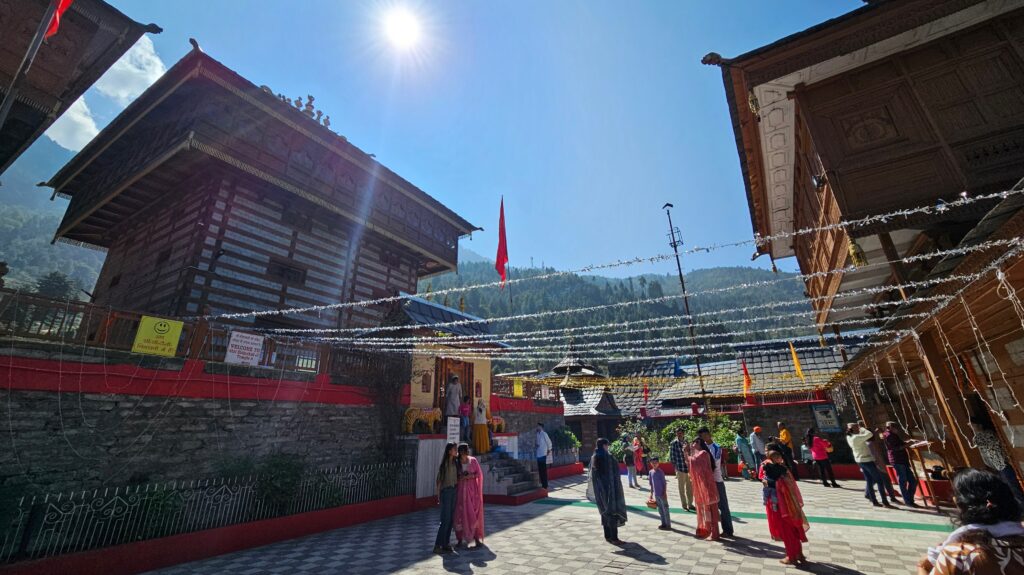
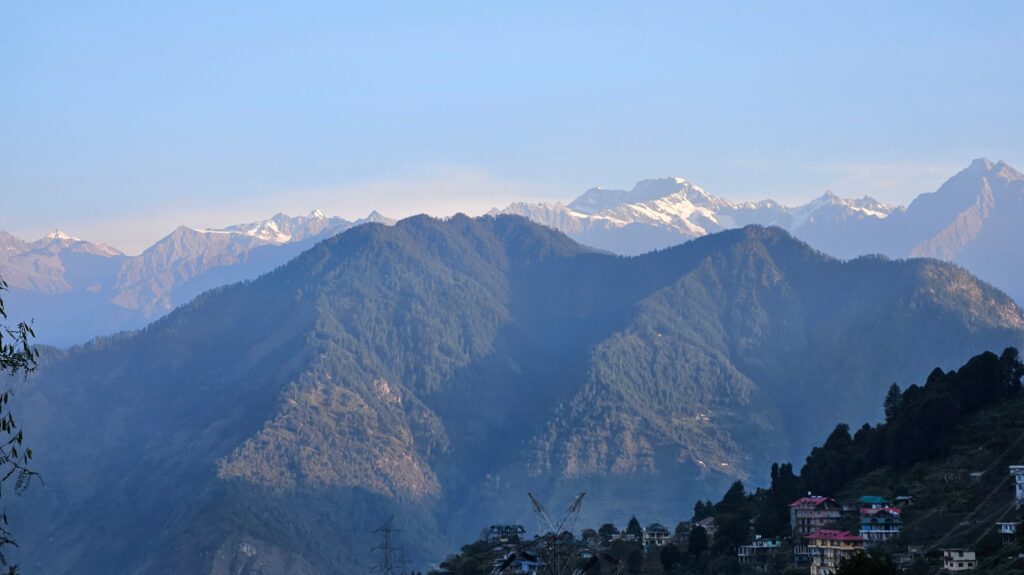
That evening, something called to me — a narrow trail leading up a hill beside our stay.
Next day at sunrise, I hiked along that trail for a couple of hours and found myself standing amidst apple orchards, apples casually scattered on the ground as if nature had laid a feast. I sat on a stone with a protein bar, watching the first light spill over the mountains. No noise. No rush. Just peace.
It felt like Himachal had opened the door gently — and invited me in.
Day 3: Entering Kinnaur – Where the Mountains Grow Grand
Driving into Kinnaur Valley was an experience I’ll never forget.
The landscape transformed dramatically — from Shimla’s lush greens to towering rocky giants, carved by the roaring Sutlej River that flowed right beside the highway.
For the first time, we saw the peaks of Kinnaur Kailash — magnificent, silent, otherworldly. The scale of it all makes you feel small in the best way possible. We were lucky to witness some snow from the left-over glaciers from the last winter as these peaks usually dont carry any snow in October.
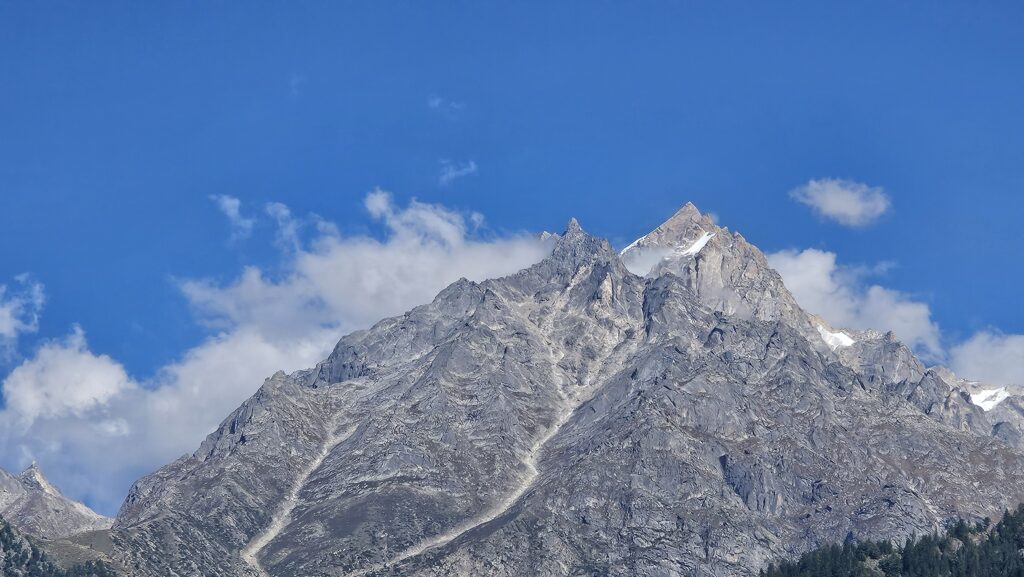
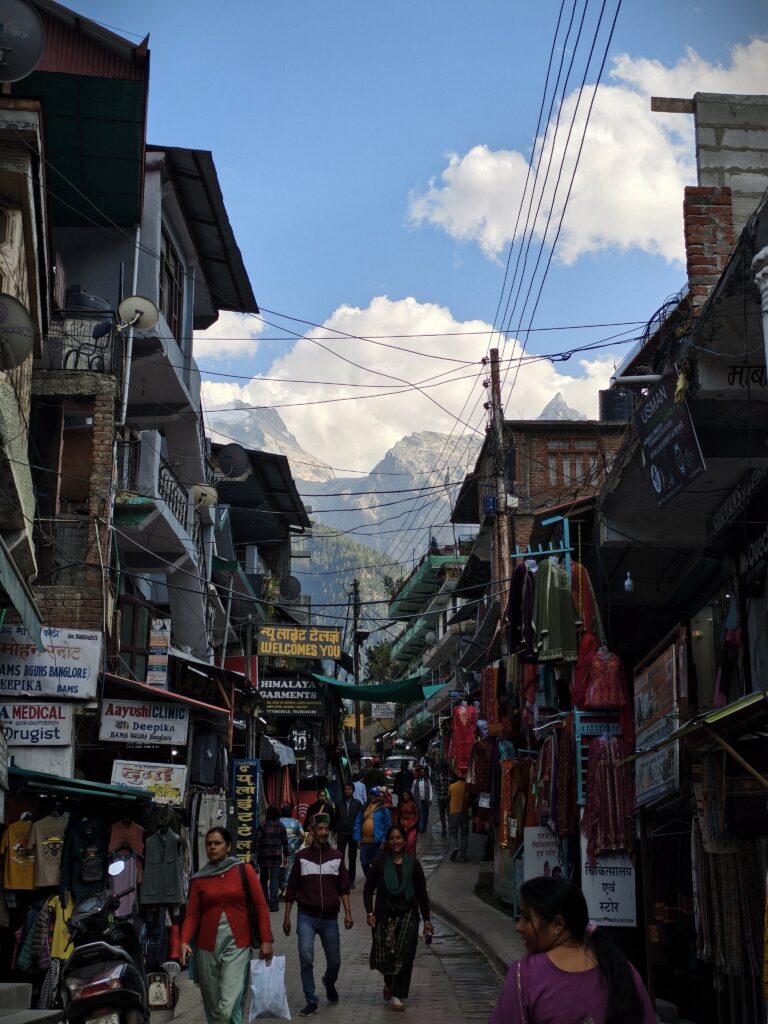
Reckong Peo & The First Taste of Tibet
We made a quick stop at Reckong Peo, the cultural heart of Kinnaur. Tibetan influence is strong here — in the monasteries, the prayer flags, the people, and the food. What I found sepcial about Peo (Locals commonly refer to Reckong Peo as Peo) was that the Kinnaur Kailash peak rises almost unbelievably right in front of me, framed like a painting wherever I looked. The streets of this place were slow and simple, dotted with cozy Tibetan cafés, momo stalls, and small markets where locals sell fresh apples and handmade woolens.
I had ramen here for the first time — warm, flavorful, comforting — and unbelievably cheap.
A short drive later, we reached Kalpa, a village that sits directly facing the Kinnaur Kailash Range, and checked into Kin Vatika Homestay which was run by the sweetest, most welcoming family. There’s something about Himachali hospitality — you don’t feel like a guest, you feel like you’re home. Totally recommend this stay!
We spent the evening watching the mountains turn golden as the sun dipped — the famous alpenglow. Later, we had the most heartwarming home-cooked dinner and sat talking about Kinnauri culture, childhood in the mountains, and life lived closer to nature.
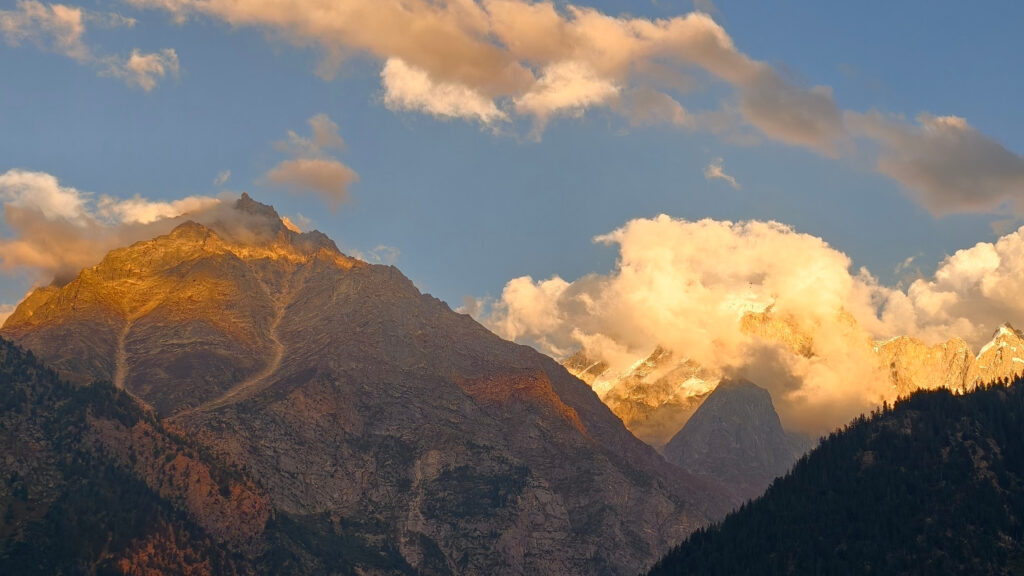
Day 4–5: Exploring Kalpa and Roghi

The next day, we explored the temples and monasteries of Kalpa, before heading to Roghi, a nearby village. I spent hours walking through deodar forests and apple orchards, shepherds leading their sheep to graze, sunlight flickering through tall trees — it felt like a scene straight out of an old Himalayan folk tale.
When we returned to our homestay, we noticed apple trees full of ripe apples around the homestay. The host smiled and said, “Pluck as many as you want.”
Plucking them with our own hands and tasting them — crisp, sweet, and grown with love — felt surreal. Thats my mom holding those apples with the utmost joy.
It was a slow day. A good day. One of those days where life feels full.

Day 6: Batseri – Where the Baspa River Sings
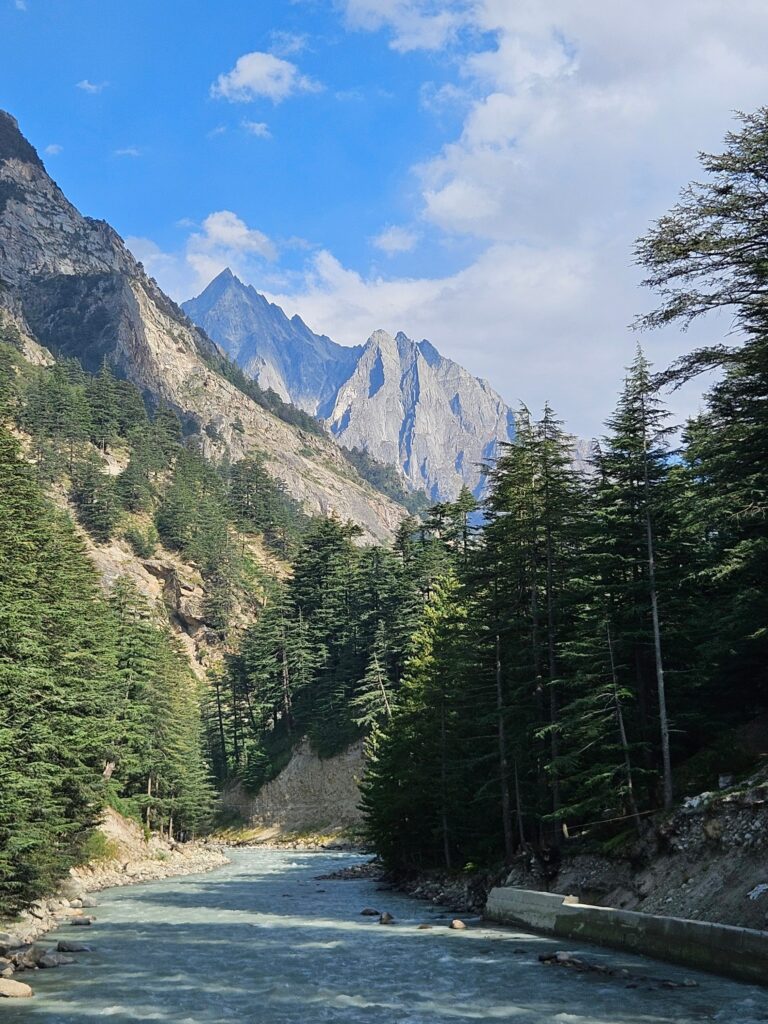
We left Kalpa for Batseri, a small village in the Sangla Valley, by the Baspa River. On the way, we stopped at Sangla Market, a trading hub for all nearby mountain villages.
Batseri was different — quieter, more secluded. We checked into the Toshim Homestay which was more luxurious, but the highlight was again the warmth of home-cooked meals.
In the evening, we walked down to the Baspa riverbed. Mountains on one side, vast valleys on the other — the landscape felt poetic. I sat with my feet in the cold water, eating an apple I had plucked with my own hands. My heart felt full. Present. Silent.
That night, we lit a bonfire. We talked — really talked — the kind of conversations families rarely have in the rush of everyday life. It was healing.
Day 7: Chitkul – The Last Village of India
The next day, we drove to Chitkul, the last inhabited village near the Indo-Tibetan border.
The valleys here look different — starker, more raw, almost like a doorway to Ladakh. Tibetan influence grows stronger — monasteries, traditional wooden homes built with Kath-Kuni architecture, gushing mountain streams irrigating terraced fields and air thick with ancient stories.


In the village monastery, I met a group of bikers who had ridden all the way from Shimla. We hiked uphill for sunset — and while the sun dipped behind the mountains, the moon rose in full grandeur. The whole valley glowed silver.
It felt like the mountains were blessing us.
We stayed at the Little Nest – the stay experience was pretty mediocre, try to lookout for other stays in the village area.
And Then It Was Time to Leave
The next morning, we drove towards Narkanda, where my family would stay before heading to Chandigarh and flying back home. I had another week in Himachal ahead — and let’s just say, the adventure was just beginning.
But that’s a story for another blog. Stay tuned!
You may also like
- Read my Bengaluru to Ooty Road Trip experience here.
- If you enjoy budget travel, check out my guide on How to Plan a Budget Trip from Scratch.
